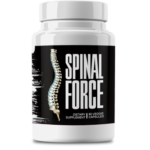This Village-Made Chinese Pain Reliever Eliminates Back And Joint Pain!
Medial Collateral Ligament Injury: When to See a Doctor

Medial Collateral Ligament Injury: When Should You Worry?
If you're active or play sports, chances are you've had your fair share of knee troubles. One of the most common culprits? The medial collateral ligament (MCL) injury. Whether it's a sharp twinge after a wrong step or full-blown pain that won't quit, MCL issues can really slow you down. But here's the million-dollar question: when does that nagging knee pain cross the line into "see a doctor" territory? Let's walk through everything from what causes these injuries to when you should definitely get it checked out.
Getting to Know Your MCL
What Exactly Is an MCL Injury?
Picture your MCL like a sturdy rubber band running along your inner knee - it connects your thigh bone to your shin and keeps your knee from wobbling side to side. When this ligament gets stretched too far (or worse, torn), that's when the trouble starts. It's usually those sudden twists or direct hits that do the damage.
How Do People Typically Hurt Their MCL?
You don't have to be a pro athlete to wind up with an MCL injury, but it sure helps your odds. Most injuries happen when:
- Sports go wrong: Football tackles, soccer pivots, or basketball landings can all spell trouble for your MCL.
- Life happens: That slip on the ice or fender bender where your knee takes the hit.
- Overdoing it: Even runners and cyclists can wear down their MCL over time with repetitive stress.
Red Flags You Might Have an MCL Injury
Your knee has ways of telling you something's up. Watch for:
- A tender spot on the inner knee that hurts to touch
- Swelling that makes your jeans feel suddenly too tight
- That unsettling "pop" sensation when it happened
- Your knee feeling about as reliable as a folding chair
How Bad Is It? The MCL Injury Scale
Not all MCL injuries are created equal. Doctors sort them into three levels:
Grade 1: The "Walk It Off" Injury
This is your minor sprain - the ligament's irritated but not torn. You'll notice some tenderness and maybe slight swelling, but your knee still feels solid.
Grade 2: The "Okay, This Hurts" Injury
Now we're talking partial tearing. Expect more noticeable pain, swelling that sticks around, and your knee might protest when you try to pivot or put weight on it.
Grade 3: The "Hospital Now" Injury
Complete rupture territory. Your knee will feel unstable, look swollen, and basically refuse to do its job. This one's not something to tough out.
When to Stop Googling and See a Doctor
Warning Signs You Shouldn't Ignore
Some symptoms are your body's way of flashing warning lights:
- Putting weight on that leg feels impossible
- Your knee's swollen like a balloon and turning colors
- It keeps giving out or locking up on you
How Long to Wait Before Getting Help
If you've been good about RICE (rest, ice, compression, elevation) for a few days but your knee still looks and feels like it lost a fight, it's time to call the doc. Waiting too long with a serious tear can lead to bigger problems down the road.
What Happens If You Tough It Out?
Playing the hero with an MCL injury can backfire. You might end up with:
- A knee that's permanently wobbly
- Early arthritis setting up shop
- Other ligaments picking up the slack and getting hurt too
Getting the Right Diagnosis
What to Expect at the Doctor's Office
Your doc will poke around your knee, have you move it different ways, and ask how the injury happened. Be honest - that "I totally meant to slide into home plate" story might be important.
The Imaging Rundown
X-rays check for broken bones, but the MRI is the star for showing ligament damage. Sometimes they'll use ultrasound to see things in motion.
Making Sure It's Not Something Else
MCL injuries can have doppelgangers like ACL tears or meniscus issues, so your doctor will rule those out before settling on a treatment plan.
Fixing What's Broken
The Non-Surgical Route
Most MCL injuries heal without going under the knife. Treatment usually involves:
- RICE: The classic first aid approach - rest, ice, compression, elevation
- Bracing up: A good knee brace can be like training wheels while you heal
- Physical therapy: Where you'll learn exercises to rebuild strength without reinjuring yourself
When Surgery Enters the Chat
Only the worst cases need surgery, like:
- Complete tears with other ligaments involved
- When all the conservative treatments didn't do the trick
The Road to Recovery
Healing times vary:
- Grade 1: Back on your feet in a week or two
- Grade 2: Plan on a month or two of rehab
- Grade 3: Could be looking at 3+ months, especially with surgery
Keeping Your MCL Happy
Knee-Strengthening Must-Dos
Strong muscles around the knee act like natural braces. Squats, lunges, and leg presses should become your new best friends.
Warm-Up Like You Mean It
Dynamic stretches before activity and proper cool-downs afterward can save you a world of hurt.
Gear Up When It Counts
If your sport involves contact or quick direction changes, don't skimp on knee protection.
Life After an MCL Injury
Managing the Ouch Factor
Ice packs and over-the-counter pain relievers can take the edge off while you heal.
Easing Back Into Activity
Don't rush it - coming back too fast is how reinjuries happen. Your physical therapist will help pace your return.
Long-Term Knee Care
With proper rehab, most people bounce back completely. Keeping up with strength exercises and listening to your body are key to staying injury-free.
Wrapping Up
The Bottom Line on MCL Injuries
MCL issues range from annoying to serious, but nearly all are treatable. The sooner you address it, the smoother your recovery.
Your Knees Deserve Better
If your inner knee's been giving you grief, don't just hope it goes away. Get it checked, follow through with treatment, and you'll be back to your active self before you know it.
Been through an MCL injury recovery? Drop your best tips in the comments - your advice might help someone else!








